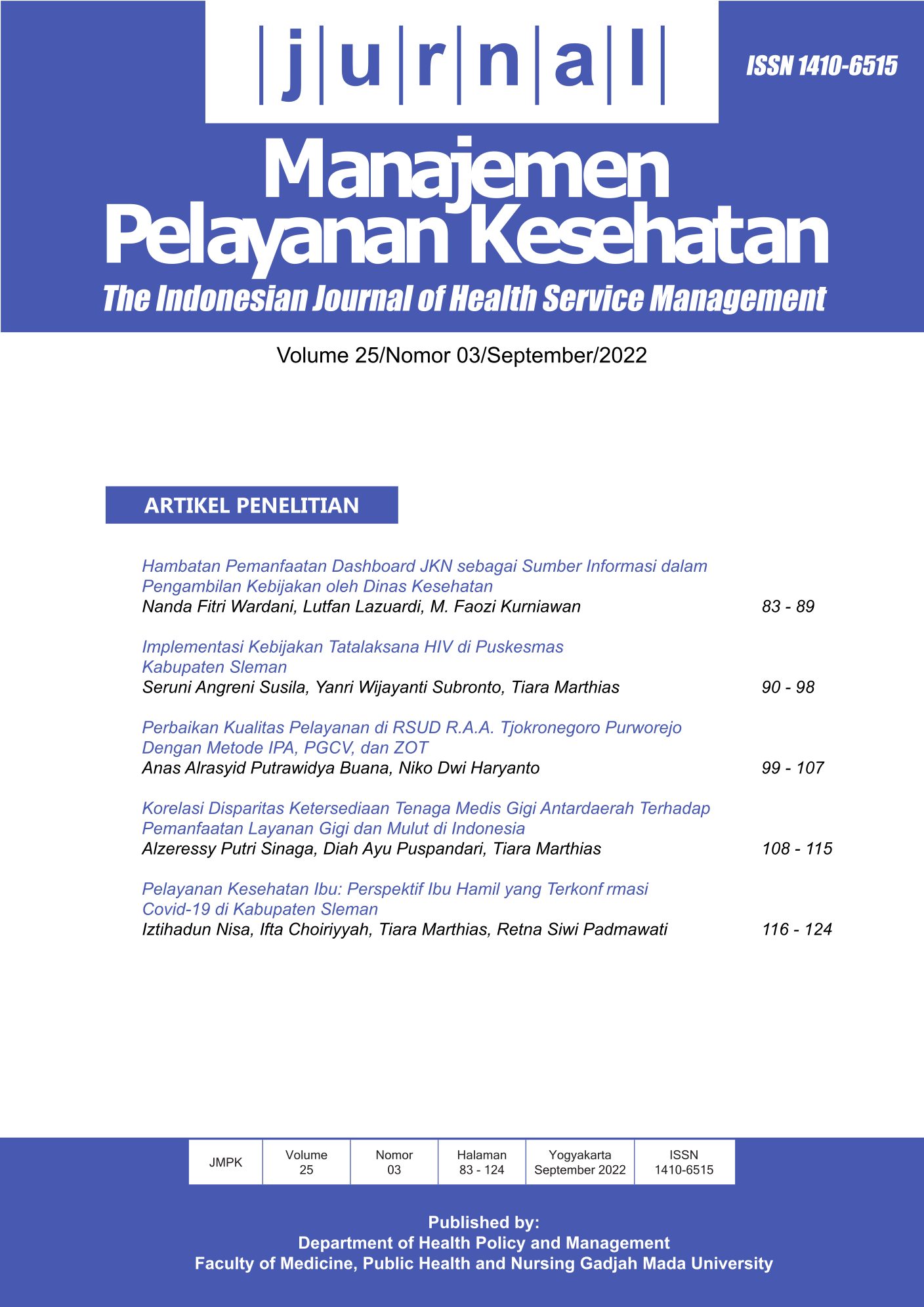Implementasi Kebijakan Tatalaksana HIV di Puskesmas Kabupaten Sleman
Abstract
Background: HIV AIDS is still a global and national challenge. The government is trying to control it by expanding access to HIV treatment at the Puskesmas, including 4 Puskesmas in Sleman Regency. However, efforts to expand access to treatment have not yet reached the target of 95% of people living with HIV who are receiving ART and 95% of people living with HIV who are viral load
suppressed. WHO in 2017 recommended the immediate initiation of diagnosed HIV-positive people regardless of CD4 cell count and followed by changes in the national HIV management policy through a fast-track strategy in 2018 to provide
immediate initiation of ARVs, provision of Tuberculosis Preventive Therapy, and viral load monitoring. The rapid change in HIV management strategies raises the question of whether the Puskesmas in Sleman Regency can carry out HIV
management according to the latest policy recommendations in achieving the target of 90% of people living with HIV who are suppressed by viral load. Objectives: Measuring the suitability of the implementation of HIV management at the Puskesmas based on regulations and finding the supporting factors and obstacles in the implementation of HIV management at the Puskesmas.
Methods: This is mixed-method research with a sequential explanatory approach. The location of research was carried out in four health centres in Sleman Regency, which had organized the HIV Treatment Support Care Service Program. Data was collected in May-June 2022. Quantitative data was secondary data on cases of people with HIV who accessed PDP services registered at the Puskesmas from 2019 until July 2021. Qualitative data were taken from 9 informants, selected by the purposive sampling method, through in-depth interviews. The quantitative sampling method uses a non-probability sampling method. Results: There is a discrepancy in the suitability of treatment at the Puskesmas with management standards according to regulations, as well as the low number of people living with HIV who are monitored for viral load suppression. The inhibiting factor for implementing HIV management in Puskesmas is the attitude of health workers to delay treatment related to perceptions of HIV prevention policies that have not been well socialized. Not all service providers are trained,
lack of viral load testing facilities in hospitals, inefficient HIV management records systems, and stigma are obstacles to implementing HIV management. The supporting factors for the implementation of PDP HIV are the attitude of the willingness of health workers to provide treatment related to the perception of peer support and the presence of trained officers in counseling and logistical
support for adequate drugs. Conclusion: Not all people living with HIV treated at the Puskesmas have received treatment according to regulations until viral load suppression is monitored. For this reason, it is necessary to increase the capacity of HIV counseling
and management for all health workers involved in providing PDP services, adding viral load testing facilities at regional hospitals, and providing HIV stigma prevention programs for people living with HIV, families, communities and health services.
Copyright (c) 2022 Seruni Angreni Susila

This work is licensed under a Creative Commons Attribution-NonCommercial-ShareAlike 4.0 International License.

